Planting schemes for carrots
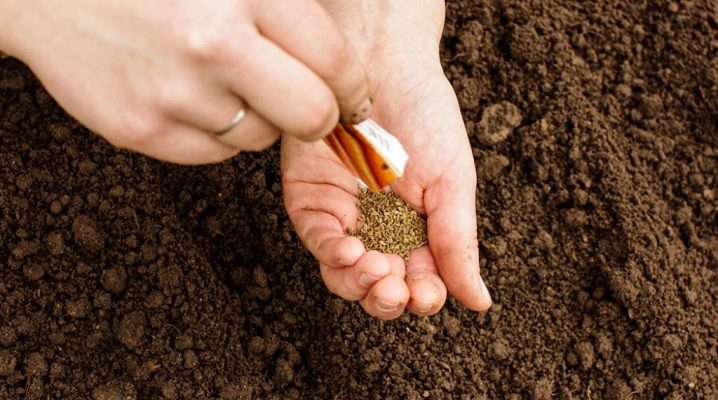
Optimal plant spacing and planting depth are not the last issues to be addressed before sowing seeds. Labor input in cultivation and yield per 1 sq. M. Depends on the carrot planting scheme. m.
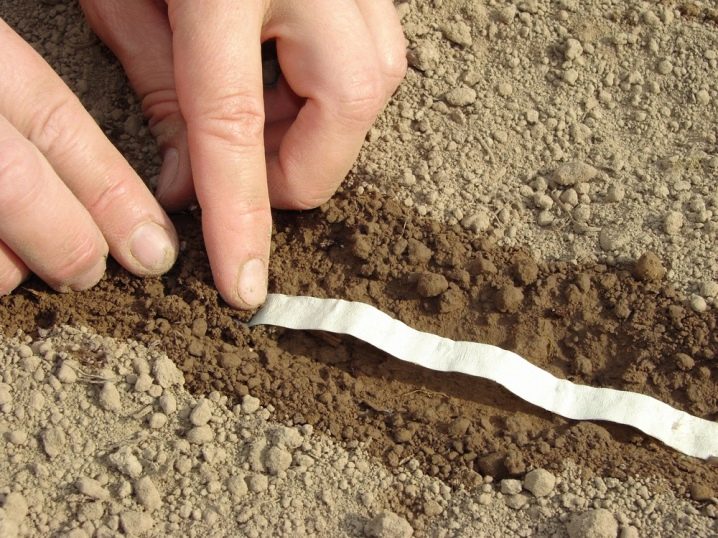
How far to plant in spring?
The distance between the seeds is 5 cm in either direction. This is the optimal average planting pattern for carrots in the open field. However, the distance between the rows is usually made larger to make it easier to care for the carrots. In thickened plantings, plants receive less light, and it is more difficult to remove weeds or water them. Therefore, 15-20 cm are kept between the rows.
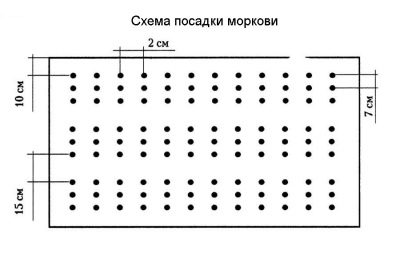
The distance from each other in the garden may vary depending on the variety. For example, "Nantes super-succulent" (manufacturer "Aelita") recommends planting every 5 cm (in row spacings - 20 cm), and early Red Bunny carrots germinate so actively that they are kept 3-4 cm between plantings, in row spacings - 18-20 cm each. Seeds are usually laid out by hand.
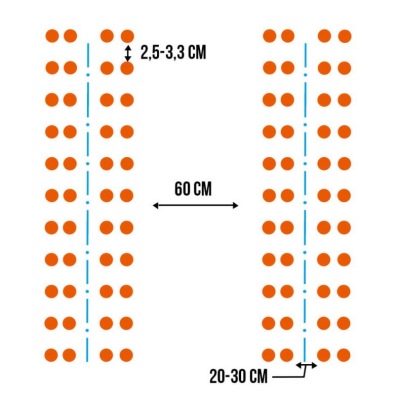
Simple ways
Simple sowing methods are laying out seeds without any additives. They are small in carrots, so the method is rarely used - most often for rare or exotic varieties, when there are few seeds and there is a desire to save each one. There are two easy ways to sow seeds.
- Lines. The end side of the board makes recesses of 2-3 cm, between the rows - 20 cm, between the carrot seeds - 3-4 cm.
- Ribbons. Differ from stitching in a wider seating area. The flat side of the board 10 cm wide at a distance of 20 cm from each other makes strips 2 cm deep, the seeds are laid out in a depression in three rows (1 in the center, 2 at the edges). There should be a distance of 5 cm between the rows. There are ready-made tapes on sale. They are two aligned strips of thin paper, between which the seeds are already laid out. The seeds are usually placed frequently, given that some of them may not germinate. If everyone sprouts, such carrots need to be thinned out.
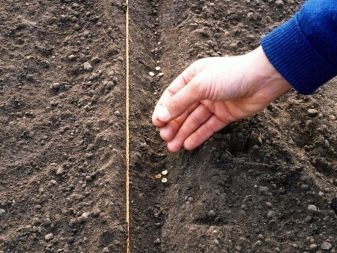
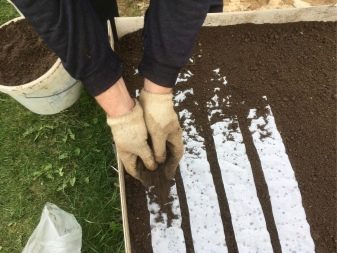
Seeds on a ribbon are inexpensive, for example, 500 m of Nantes carrots will cost 30 rubles.
Sparse sowing
Thin seeding makes it easier to work with small seeds. They are mixed with an agent that allows the seeds to be evenly distributed. It is not the seeds themselves that are laid out in the open ground, but the mixture. There are several ways.
- Sand. Small seeds are most often mixed with it. For 1 part of carrot seeds, 10 parts of sand are needed. Mix them gently. The seeds are poured, like salt during cooking, along the beards drawn in advance.
- Potato starch. Boil 1 liter of water in a small saucepan. Stir 3 tbsp in 1 glass of cold water. tablespoons of starch, then pour the resulting solution into a saucepan in a thin stream, stirring continuously. Boil until the liquid resembles a thin paste in consistency. Cool, add 10 carrot seeds to this liquid, mix gently. Better to pour the "paste" into a bowl with a spout. Pour liquid over the previously made and watered grooves, sprinkle them with earth. With this planting, carrots do not need to be thinned at all.
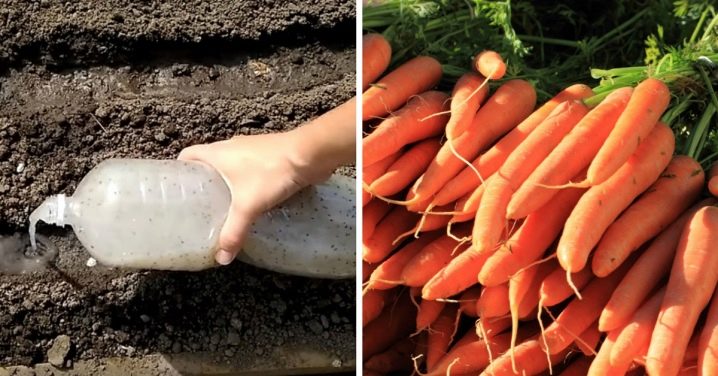
For sparse sowing, carrots are mixed with the seeds of other crops. The precocious ones are best suited - radishes, lettuce. They ripen quickly and leave mixed plantings, leaving the carrots the sovereign mistress in the garden.
Precise fit
Precise planting assumes a pre-determined distance between seeds.
- Ribbons. You can not only buy them, but also make them yourself.The seeds are glued on a paper tape at a distance of 4-5 cm from each other with paste, to which fertilizers are added (1 tbsp. L. Universal mineral mixture for seedlings per 1 liter of paste). It is convenient to use toilet paper as a paper tape, it is cut into narrow strips of 2.5 cm each, seeds are laid out, paste is dripped on them, dried, stored in rolls. They plant such a tape to a depth of 2.5-3 cm, sprinkle it with earth. The moisture will completely destroy the paper and will not interfere with the seeds.
- Tags. In the ground, not grooves are made, but pits. It is convenient to make them with an unnecessary pen. They keep 3 cm between the pits. In this way, it is better to plant granular seeds. You can also use more advanced marking devices - for example, a bezel with teeth of the desired frequency.
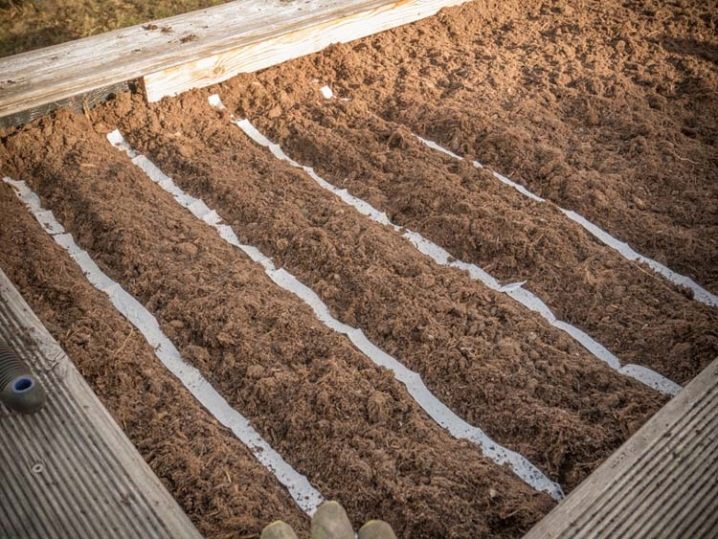
For spring planting, choose a clear, dry day. Before planting, the furrows are spilled with boiling water, sprinkled with sifted wood ash. Planting depth of carrot seeds - 2 cm.
How to sow before winter?
For planting before winter, the seeds are buried deeper - there should be 5-6 cm of soil above them. This will protect them from freezing. Some of the seeds may not sprout, so their number should be greater than during spring planting.

There is no need to water after sowing, it is enough to sprinkle with pre-warmed soil. After that, the place with the plantings is mulched.
Do not plant carrots in areas where parsley or beans previously grew. This culture does not like itself as a predecessor. After applying fresh manure to the soil, carrots cannot be planted on the site for 2 years.
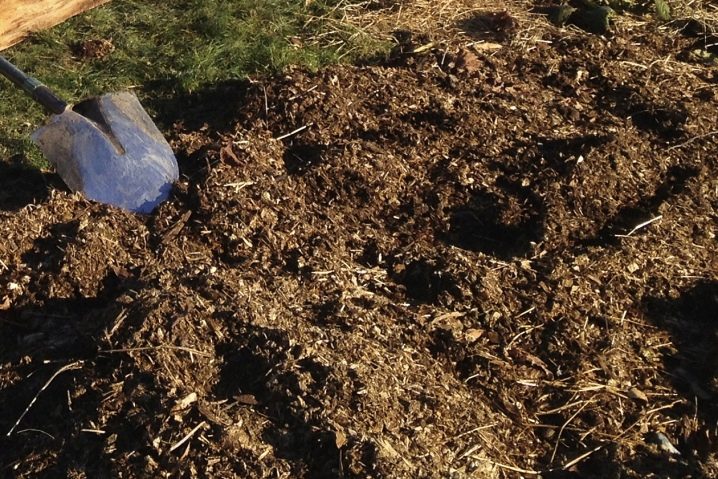
What else do you need to consider?
Before sowing, the soil is carefully compacted in the furrows. If you put the seeds on a loose one, then after watering they will fall through and the emergence of seedlings will be late and not so friendly.
The best specimens of carrots are selected to collect seeds during the active season. The culture forms seeds in the second year, the carrots are sent for storage and taken out only in late March - early April, when the root crop releases small fresh leaves. Ridges dug up in the fall are prepared for planting. Dig holes at a distance of 40 centimeters from each other, the row spacing is 70 cm. Usually, planting 4 root crops is enough (1 is undesirable - it will not be able to pollinate).
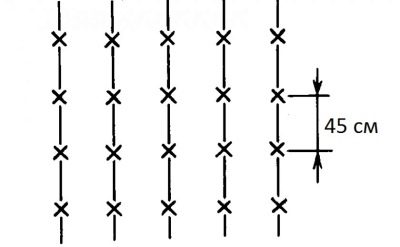
In the greenhouse
In summer cottages, carrots are planted in greenhouses to harvest in May. In the greenhouse, 20-25 cm are left between the furrows, the depth of the furrows is 2 cm. The distance can be reduced for the Minicor variety and the Mokum snack carrots - these varieties for greenhouses have medium-sized fruits. Table carrots "Amsterdam 3" are planted in rows every 20 cm.

With drip irrigation
Additional space is required to install drip irrigation systems. The width of the beds is 1 m (when sowing in 3 lines). Between 3 lines of carrots, 2 drip irrigation belts are put in. At the same time, 2 rows of carrots are sown on beds 50 cm wide, and one irrigation tape. It is most convenient to sow on such beds with homemade or purchased tapes.
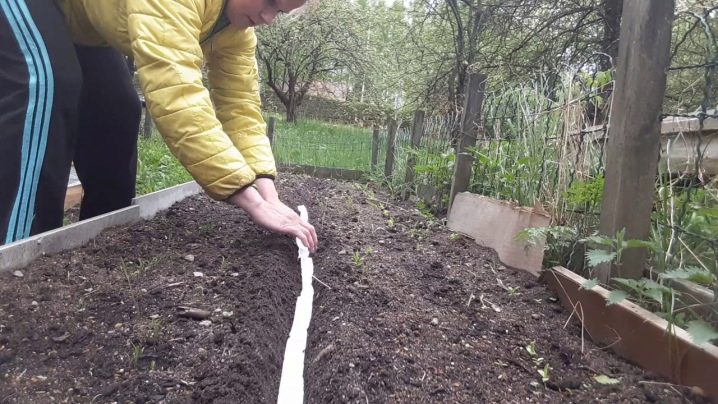
When boarding together
Carrots are often used in garden beds, especially with onions. This union is very successful. Onions scare away a lot of pests of carrots, protect them from bacteriosis. The landing patterns can be varied. Onions are sown either along the perimeter of a pure carrot ridge, or in the aisles. The distance between the rows is from 16 to 20 cm. Compaction plantings are possible, the roots of onions are higher than those of carrots, the ripening times are different - they do not interfere with each other. In this case, the row spacing is 13-14 cm.

Sowing both crops together can be done in different ways.
- Carrot seeds in granules are laid out in rows, furrows are drawn between them and onions are sown.
- Seeds of carrots and onions are mixed and covered in one furrow.
- The seeds are alternately glued onto one roll of paper, the tape is laid out along the furrows.
- They draw furrows and sow them with carrots, make holes for onions with any suitable tool, plant onions in them.
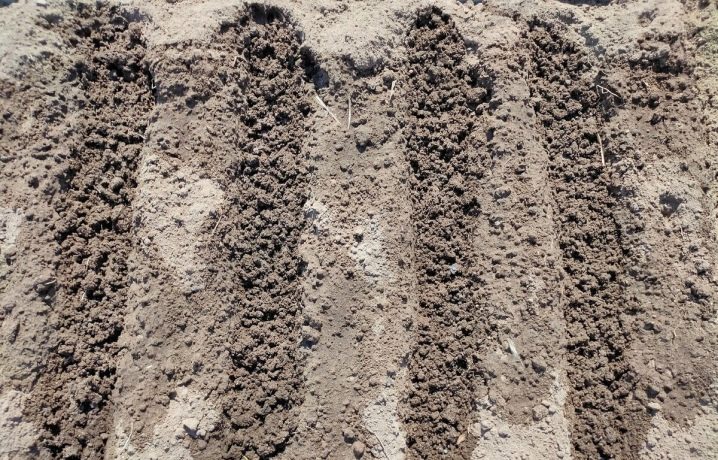
Some tweaks will help you do a much better fit.
- Before sowing, carrot seeds can be hardened and germinated. They are placed in a canvas bag, in mid-April they are dropped into the falling snow. They wait two weeks, then they dig it up, wash it right in the bag and examine it. If the seeds have sprouted, they can be planted. If there are no sprouts, you can extend the hardening for another 1 week.
- If you plan to sow seeds in paste, you can prepare it ahead of time - 1 day before planting. The seeds themselves can remain in the paste for up to 6 hours. You can't keep it any longer - they will suffocate.
- The beds are covered with foil immediately after sowing, this allows you to retain moisture. And after the seeds germinate, the film is replaced with double lutrasil. This protects against damage from carrot flies or beetles. The material is removed when the shoots reach 8 cm - such shoots are too tough for pests.

Carrots are an unpretentious vegetable, in case of thickening they are thinned out, so do not be afraid to sow it too thickly. The seeding depth also plays a role. Superficially sown seeds will expose the tops of the carrots to the sun and begin to turn green (although not in all varieties).
But this issue is not difficult to solve. The vegetable can be spud or mulched on time.
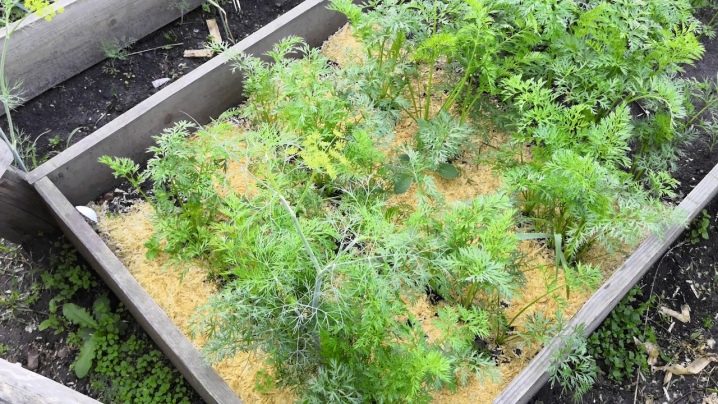













The comment was sent successfully.